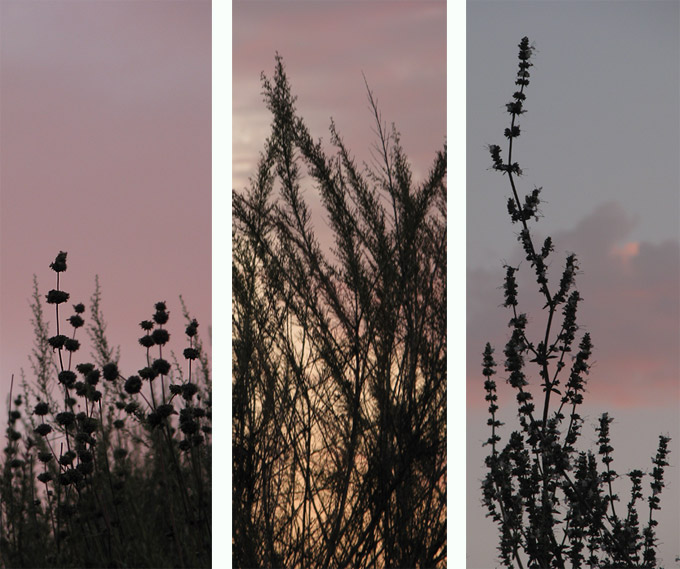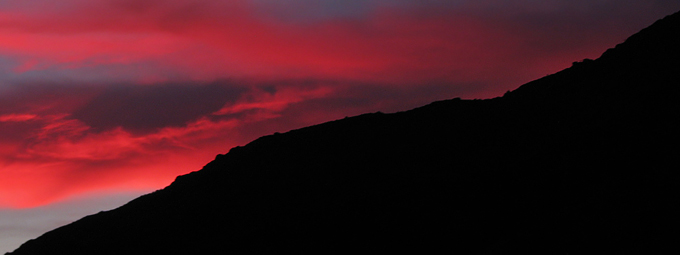Another night of unsatisfying sleep, my Inbox is full of e-mail awaiting responses, my household chores are steadily backing up. In light of all of this, I had decided that I would stay inside today and just post some remaining photos from yesterday’s walk. But… this morning I looked outside and it was cloudy. I cracked the front door and the weather was cool and breezy. Birds were singing… squirrels were zipping around… and, well, you know how it goes. I got dressed and put my shoes on. [insert sheepish grin] I figured I should at least grab a cup of juice before leaving and while gulping it down, I peered out the kitchen window. As if on cue, my favorite spotted-little-one showed up with its mom and gave me a glimpse or two as it snuck through the sage and olive trees.

There was a fair bit of blue sky showing, but the clouds that covered the rest of the sky more than made up for it. Wispy and whimsical. Puffs and arcs. Stretching, shifting and moving. Aaaah… action in the sky… just what I crave!



As if issuing some sort of homage to the little spotted fawn from earlier, the sky shifted yet again and produced this most wonderful pattern:
 **Be sure to click on the image for a beautiful panoramic.**
**Be sure to click on the image for a beautiful panoramic.**
A Cooper’s Hawk (quite likely the same one from yesterday!) soared effortlessly above me. Sharing the sky with the hawk were a few swallows swooping and diving at unseen insects. I heard the raucous croaking of the boisterous raven family long before I spotted them high over the hills. The juveniles are as big as the adults now and the family (6 birds total, I think) loudly travels together in search of food and perhaps a bit of mayhem.

There were small arthropod joys to be had as well. Several bumble bees were working a patch of California Poppies. If yesterday’s photos were a matter of good luck and perfect timing, today’s images proved to be more a matter of supreme patience and diligence. For some reason, my camera repeatedly refused to achieve focus when I wanted it to, and countless opportunities for beautiful shots of the bees ended up as little more than blurry blobs of orange, yellow and black. But, it was a beautiful day to be out and I smiled despite my frustration, and stuck with it until I managed to come away with at least a few nifty shots.
 I was kind of amazed at how long bumble bees’ back legs are when they let them dangle.
I was kind of amazed at how long bumble bees’ back legs are when they let them dangle.
I knew I had been gone too long, and reluctantly I turned and headed for home. As I rounded the corner of the small work shed near our cabin, I slowed down to carefully watch my step and scan the ground… Why? Well, because there’s always the chance I’ll see this poking out of the abandoned ground squirrel burrow:
 If you’ve got a heebie-jeebie-thing about rattlers, I wouldn’t click on this one for the bonus shot… (*grin*)
If you’ve got a heebie-jeebie-thing about rattlers, I wouldn’t click on this one for the bonus shot… (*grin*)
Hope everyone has had a truly wonderful day!










































